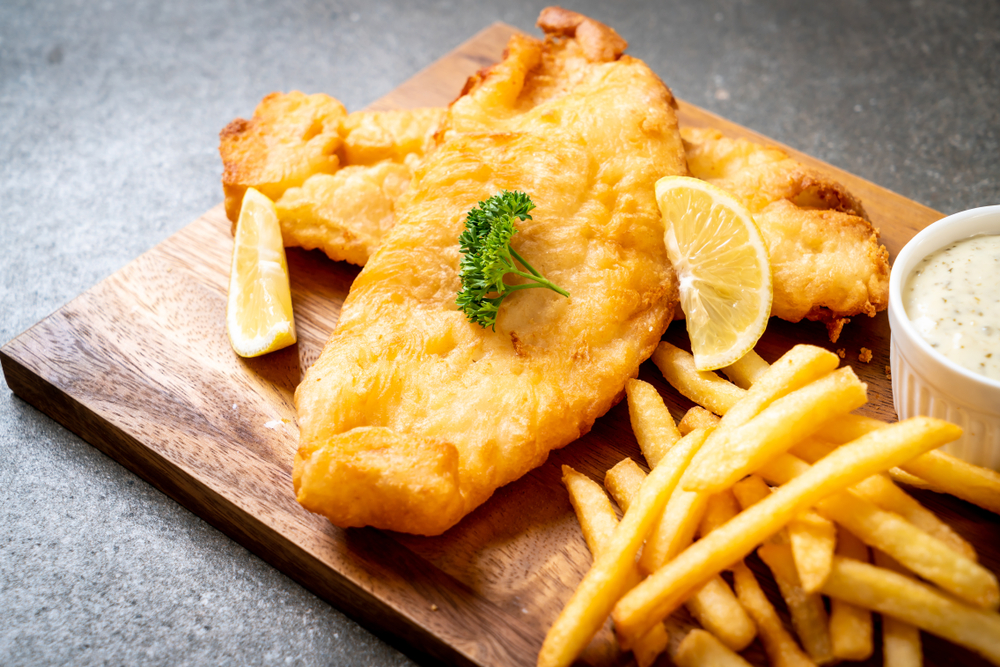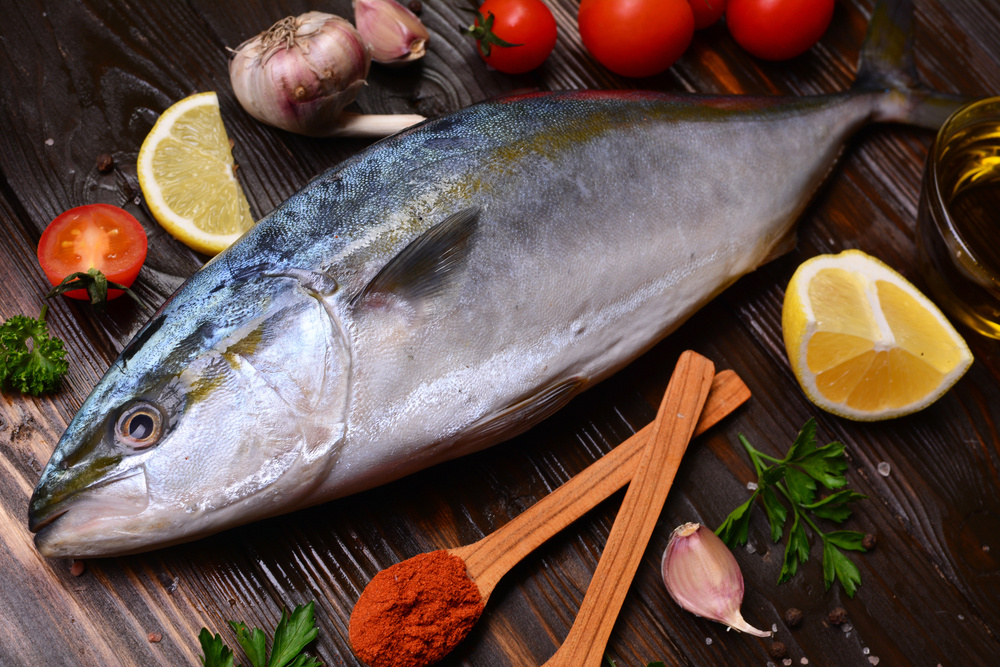Salmon is an incredibly versatile and delicious fish that is rich in nutrients, making it a popular choice for many home cooks.
That said, one of the most common complaints when it comes to cooking salmon is that it can sometimes taste a bit fishy. This fishy taste can be off-putting for some, detracting from the otherwise delightful flavor profile of perfectly cooked salmon.
Luckily, there are ways to ensure that your salmon dishes taste fantastic and are free of any unwanted fishiness. By taking a few simple steps during the selection, preparation, and cooking processes, you can greatly reduce or even completely eliminate this issue.
In this article, we’ll provide you with some easy-to-follow tips and tricks to help you cook salmon that is both delicious and satisfying.
Key Takeaways
- Choosing fresh salmon and understanding the factors contributing to fishy taste are crucial.
- Proper preparation, cooking methods, and selected recipes can lead to a less fishy salmon dish.
- While enjoying the health benefits of salmon, be aware of potential concerns and FAQs.
Understanding What Causes Fishy Taste
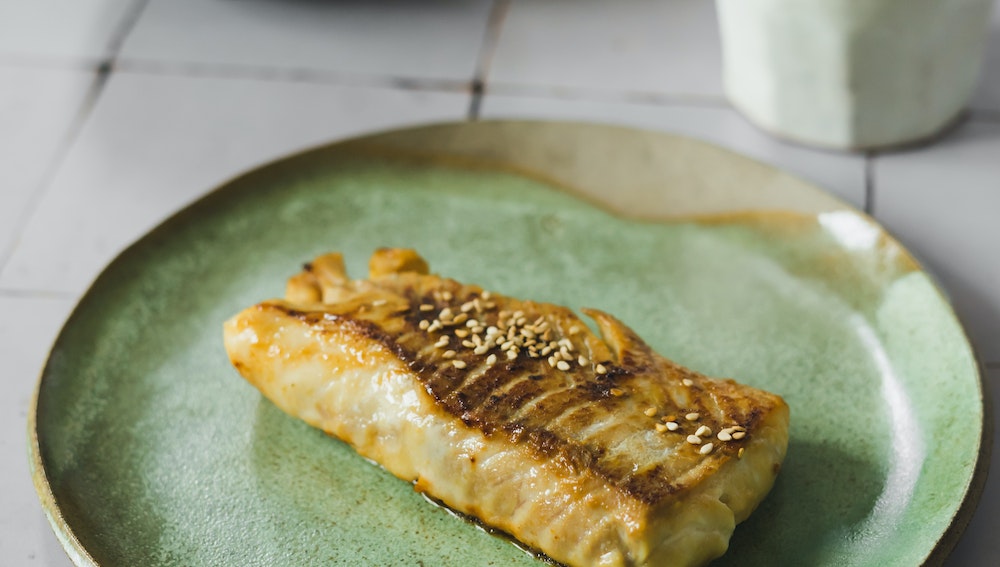
Salmon and other fish can sometimes have a strong, fishy taste. This off-putting flavor is mainly due to the presence of a substance called trimethylamine (TMA).
TMA is produced when bacteria break down trimethylamine oxide (TMAO), a naturally occurring compound in fish. As the fish ages or if it’s not properly stored, TMA levels can increase, resulting in a more pronounced fishy taste.
The fishy taste of salmon is influenced by several factors including the quality of the fish, how it was stored, and its age. Salmon that is fresher and has been properly handled will typically have lower levels of TMA and TMAO, leading to a milder taste.
Fish with higher levels of TMA will have a stronger flavor and aroma, which some people may find unpleasant.
Some fish species have higher TMAO levels than others, which can contribute to their stronger fishy taste. For example, fatty fish like salmon naturally contain more TMAO, as it helps protect their proteins from the high pressures in deep water environments.
However, this doesn’t mean that all fatty fish will taste fishy; proper handling and preparation techniques can significantly reduce the strong flavor.
In summary, the fishy taste in salmon is largely due to the presence of trimethylamine, produced as a result of bacterial breakdown of trimethylamine oxide.
Fresher fish, proper storage, and the right cooking techniques can help minimize this off-putting flavor, allowing you to enjoy a delicious and nutritious meal.
Selecting Fresh Salmon

Choosing the right salmon is essential for a tasty and non-fishy result. When selecting fresh salmon, there are a few key factors to consider that can significantly impact the flavor and quality of the dish.
Firstly, consider the source of the salmon. Buying from a reputable fishmonger or market ensures that the fish has been properly stored and handled.
The American Heart Association recommends consuming fatty fish like salmon at least twice a week for its health benefits. Thus, availability should not be an issue.
Look for salmon with a vibrant color, which can range from deep red to vibrant pink, depending on the species.
Avoid salmon with any discoloration or brown spots, as these are signs of aging. The flesh should be firm and elastic to the touch, springing back when gently pressed.
Fresh fish have a mild, pleasant smell. A strong, fishy odor is often a sign that the salmon is no longer fresh. One of the reasons behind the fishy flavor is the presence of trimethylamine, a compound that develops as fish starts to spoil.
Likewise, the eyes of the salmon should be clear, bright, and slightly bulging.
Additionally, America’s Test Kitchen and Insider recommend choosing a salmon with a good amount of fat, indicated by the white lines referred to as marbling.
This fat content not only contributes to a rich, moist texture but also helps reduce the strong fishy flavor often associated with salmon.
In summary, selecting a fresh, high-quality salmon is crucial to avoid a fishy flavor. Pay close attention to the color, texture, smell, and marbling to choose a salmon that will result in a delicious and flavorful dish.
Preparation Tips
Rinsing And Soaking
To reduce the fishy taste of salmon, it is essential to start with proper rinsing and soaking. Before cooking, rinse the salmon under cold water to remove any scales or debris.
After rinsing, soak the salmon in a mixture of one-part vinegar or lemon juice and two parts water for about 20 minutes. This will not only remove any lingering odors but also help to break down the proteins, making the fish more tender.
If you prefer a milder solution, you can also soak the salmon in a bowl of milk for about 30 minutes. The casein in milk is known for its ability to bind to fishy flavors, effectively neutralizing them.
Marinade Choices
A good marinade is key to infusing the salmon with great flavor while masking any fishiness. Choose marinades with a citrus base, such as lemon or lime juice, which help to neutralize fishy odors naturally.
Another excellent option is apple cider vinegar, as it adds a tangy flavor to the fish while mitigating the fishy smell. Avoid using overpowering or strong flavors that will clash with the natural taste of salmon. Instead, focus on complementary flavors, like garlic, ginger, or honey.
- Citrus marinade: Combine lemon juice, olive oil, garlic, and a touch of honey.
- Apple cider vinegar marinade: Mix apple cider vinegar, maple syrup, soy sauce, and a hint of ginger.
Incorporating Fresh Herbs
Incorporating fresh herbs into your salmon preparation is an effective way to enhance the taste and mask any fishiness. Dill and parsley are perfect choices for salmon, as they create a fresh, clean flavor profile.
When preparing your salmon, lightly coat the fish with olive oil and generously sprinkle the herbs on top. You can also stuff the cavity of the salmon with fresh herbs if you’re preparing a whole fish. This adds a burst of flavor from the inside out.
In summary, by rinsing and soaking the salmon, selecting the appropriate marinade, and utilizing fresh herbs, you can effectively eliminate the fishy taste and enjoy a delicious, flavorful meal.
Health Benefits of Salmon
Salmon is highly recomme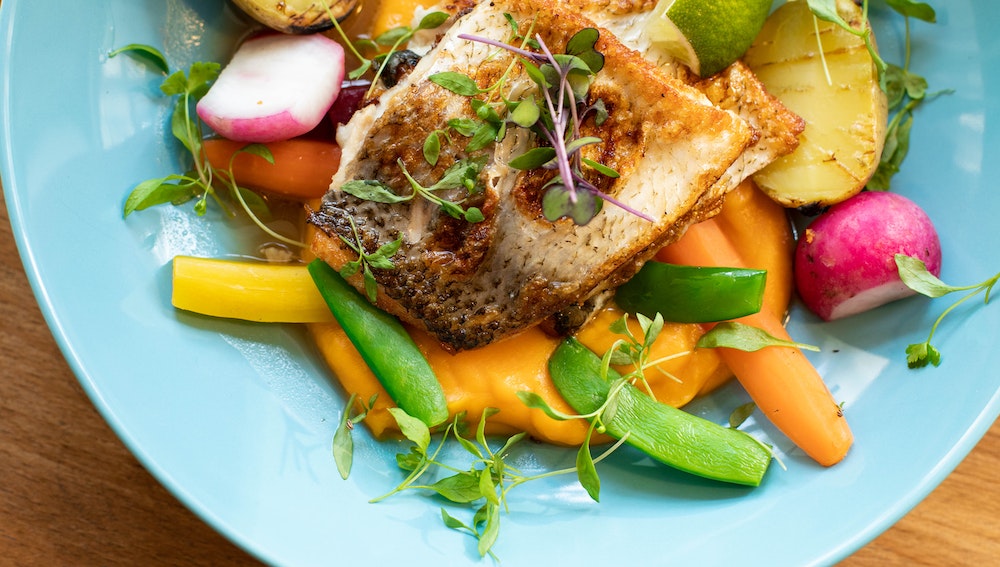 nded for its nutritional value and its role in promoting overall health. One major benefit of consuming salmon is its high content of omega-3 fatty acids.
nded for its nutritional value and its role in promoting overall health. One major benefit of consuming salmon is its high content of omega-3 fatty acids.
These essential fatty acids include both EPA and DHA, which help support heart health, brain function, and reduce inflammation.
Consuming salmon regularly can contribute to heart health, as the omega-3 fatty acids are believed to lower blood pressure and reduce the risk of heart disease.
Additionally, the protein found in salmon contributes to maintaining and repairing body tissues.
As a source of selenium, salmon plays a role in preventing cell damage. This mineral contributes to a robust immune system and helps the body function optimally.
Salmon is also rich in vitamin B, which is crucial for the production of energy, maintaining healthy skin, and ensuring proper brain function.
Salmon provides an excellent source of potassium, an essential mineral that helps maintain fluid balance and muscle function within the body. This nutrient can also aid in regulating blood pressure.
While salmon may seem like a rich food, it is not high in calories. A standard serving (3.5 ounces) of cooked salmon contains approximately 200 calories, providing an appropriate energy source for those watching their caloric intake.
In summary, salmon is a nutrient-dense food with numerous health benefits. Including salmon in a balanced diet can contribute to improved heart health, a stronger immune system, and better overall well-being.
Cooking Methods
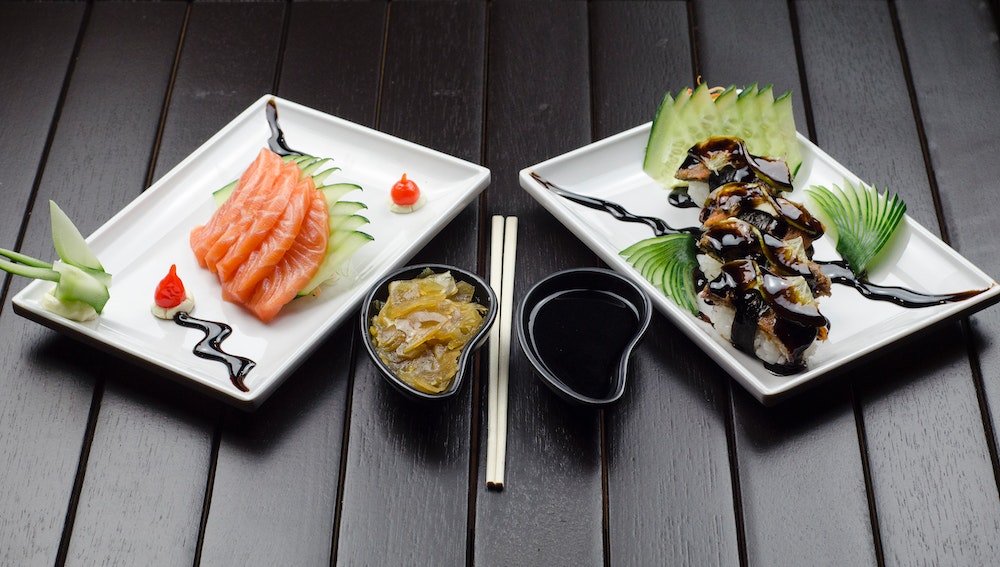
Grilling Techniques
Grilling salmon is an excellent way to reduce the fishy taste while enjoying the smoky flavors contributed by the grill. To start, preheat the grill to a medium-high temperature (about 400°F or 205°C).
Make sure the grates are clean and well-oiled to prevent the fish from sticking.
Prior to cooking, season the salmon with a simple rub of salt, pepper, and your choice of herbs or spices. For foolproof grilling, wrap the salmon in foil, leaving a small opening on top for steam to escape.
This will keep the fish moist while it cooks. Place the foil packet on the grill and cook for approximately 10 to 12 minutes, depending on the thickness of the fish. An internal temperature of 145°F (63°C) indicates a perfectly cooked salmon.
Baking Tips
Baking is another hassle-free method for cooking salmon without compromising on taste. Preheat the oven to 400°F (205°C) and line a baking sheet with parchment paper or foil. Season the salmon with your choice of herbs, spices, and a touch of salt and pepper.
Place the seasoned salmon on the prepared baking sheet and bake for 12 to 15 minutes, or until it flakes easily with a fork.
The internal temperature should reach 145°F (63°C) for fully cooked salmon. Cook time may vary slightly depending on the thickness of the fish.
Broiling Advice
Broiling salmon locks in the moisture and cooks the fish rapidly, retaining its natural flavor. Preheat the broiler and position the oven rack about 6 inches below the heating element. Line a broiling pan or baking sheet with foil for easy clean-up.
Season the salmon with your desired spices, herbs, and a pinch of salt and pepper. Place the salmon on the prepared pan, skin-side down.
Broil for approximately 8 to 10 minutes, keeping a close eye on the fish to avoid overcooking. The salmon should reach an internal temperature of 145°F (63°C) and flake easily when tested with a fork.
Noteworthy Recipes
Glazed Salmon Fillet
One popular recipe for a non-fishy tasting salmon is the glazed salmon fillet. This dish requires a few simple ingredients to create a mouthwatering glaze that will enhance the flavor of the salmon.
The glaze is typically made with honey, lime, and dijon, which not only helps mask any fishy taste, but adds a delightful sweetness and tanginess to the dish.
To prepare this meal, make sure to thoroughly pat the salmon fillets dry with a paper towel to remove excess moisture. Season with salt and pepper, then set aside while the glaze is prepared.
In a small saucepan, combine honey, lime juice, and dijon mustard, cooking the mixture over low heat until it thickens. Brush the glaze over the salmon and bake or grill until your desired level of doneness is reached. Serve the glazed salmon atop your favorite sides, such as a simple salad or rice.
Salmon Salad
Salmon salad is another tasty option to avoid fishiness in your salmon dishes. Incorporating salmon into fresh, vibrant ingredients helps to negate any unpleasant tastes.
Using smoked salmon or leftover cooked salmon, flake the fillets into bite-sized pieces and combine with a mix of lettuce, cherry tomatoes, cucumber, and red onion.
The key to a flavorful and non-fishy salad lies in the dressing. A dressing made from olive oil, lemon juice, capers, and a touch of sugar helps to balance the flavors, while also being light and refreshing. Toss the salad with the dressing and serve immediately.
This salad can be easily customized by substituting or adding additional ingredients, such as arctic char, mackerel, or even tuna for a delightful seafood mix.
Smoked Salmon Burgers
For those craving a more substantial meal, smoked salmon burgers offer a delicious alternative. The smoky flavor of the salmon combines well with the bold taste of the other ingredients, ensuring a non-fishy experience.
To make the burgers, mix together flaked smoked salmon, seasoning, breadcrumbs, and a binder such as egg or mayonnaise. Form the mixture into patties, being mindful not to over-handle the mixture.
To balance the flavors in your salmon burgers, consider incorporating a sweet and savory sauce, such as a blend of maple syrup, brown sugar, and teriyaki. This adds depth and eliminates any remaining fishiness.
Grill the patties on medium heat, several minutes per side, until slightly firm and browned. Assemble the burgers with your desired toppings, such as lettuce, tomato, and a creamy miso sauce. Serve alongside your preferred side dishes.
Potential Health Concerns

When preparing salmon, it is essential to be aware of potential health concerns. Salmon is generally considered a healthy food choice, but there are a few factors to take into consideration.
One important health concern is mercury. Salmon, like other fish, can contain varying levels of mercury, which can be harmful to the body when consumed in large amounts.
However, salmon typically contains lower levels of mercury than many other fish species, making it a safer option. To minimize the risk of mercury exposure, it is recommended to choose wild-caught Alaskan or Pacific salmon rather than farmed or Atlantic varieties.
The fat content of salmon is another consideration. Salmon is rich in healthy omega-3 fatty acids, but it also contains some saturated fat.
Moderation is key when incorporating salmon into a balanced diet. Consuming too much saturated fat can lead to an increased risk of heart disease and other health issues.
Lastly, there are proper cooking methods that can help reduce any fishy taste without compromising the nutritional value of the salmon.
One such method is to cook salmon at a low temperature, which helps preserve its natural flavors and healthy fats.
In conclusion, while there are potential health concerns associated with salmon consumption, it is still a nutritious and delicious choice when enjoyed in moderation and prepared using appropriate cooking techniques.
By being mindful of mercury levels, selecting the right salmon variety, and using proper cooking methods, the health benefits of eating salmon can be enjoyed without worry.
Frequently Asked Questions
How can I reduce the fishy flavor in cooked salmon?
To reduce the fishy flavor in cooked salmon, start by removing the skin and dark meat along the lateral line. Using fresh herbs, spices, and acidic ingredients like lemon juice or white wine can also help to mask the fishiness.
Additionally, rinsing the fillets under cold water before cooking can wash away any surface proteins that may contribute to the fishy taste.
What are some tips for choosing fresher salmon?
When choosing fresher salmon, look for firm and moist flesh with a vibrant color. The eyes should be clear, and there should be no strong fishy odor.
Always check the expiration date and try to purchase salmon from a reputable seller who follows proper handling and storage procedures.
Does marinating salmon help with the fishy taste?
Yes, marinating salmon can help with the fishy taste. A marinade with acidic ingredients like lemon juice, vinegar, or yogurt can break down proteins responsible for the fishy flavor.
Additionally, the use of aromatic herbs and spices can mask any residual fishiness.
Can soaking salmon in milk make it taste less fishy?
Soaking salmon in milk can help neutralize the fishy taste. This is because the casein protein in milk binds to the fishy-tasting compounds, such as trimethylamine, and makes them less noticeable.
Soak the salmon for 20-30 minutes in milk and discard the milk before cooking.
What cooking methods can minimize a fishy taste in salmon?
Cooking methods that can minimize a fishy taste in salmon include grilling, broiling, and baking. These methods help to cook the salmon quickly, which reduces the amount of time for fishy compounds to develop.
Foil-wrapped baking can also help to seal in moisture, ensuring the salmon remains tender and less fishy.
How do I remove the fishy taste from frozen salmon?
To remove the fishy taste from frozen salmon, thaw it properly in the refrigerator. Once thawed, rinse the fillets under cold water, and pat them dry to remove excess moisture and thawed proteins.
Cooking methods like grilling, broiling, or baking with spices, herbs, and acidic ingredients can further help reduce the fishy taste in frozen salmon.




